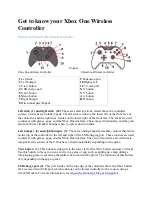
2 | GE Oil & Gas
© 2016 General Electric Company. All rights reserved.
1. General Information
The following instructions are designed to assist maintenance
personnel in performing most of the maintenance required on
the 173 Series regulators, and if followed carefully, will reduce
maintenance time.
GE has highly skilled Service Engineers available for start-up,
maintenance and repair of our regulators and component
parts. In addition, regularly scheduled training programs are
conducted to train customer service and instrumentation
personnel in the operation, maintenance and application
of our control valves, regulators and instrumentation.
Arrangements for these services can be made through your GE
Representative or District Office. When performing maintenance
,use only genuine GE replacement parts. Parts are obtainable
through your local GE Representative or District Office. When
ordering parts always include the MODEL and SERIAL NUMBER of
the unit being repaired.
2. Transport, Storage and Handling
Transport
Depending on their size, regulators can be transported loose or
packed, in cardboard boxes or in wooden crates.
All the regulator ends are fitted with covers to prevent dirt from
entering. Units can be placed on pallets if required. Follow all
instructions noted on the packaging.
Operators moving loads must take all necessary precautions to
prevent accidents.
Storage
Regulators must be kept in a dry place to protect them from
atmospheric conditions. They may only be removed from their
crates or packing immediately prior to installation.
The end protections and covers must be kept on until installation.
Regulators, whether packed or not, must not be subject to impact.
Regulators, whether packed or not, must always be kept
upright, that is, never lying on one side, in order to prevent
distortion and damage to internal parts.
Handling
When unpacking the regulators and removing the end protectors
immediately prior to installation, take great care to make sure
that foreign material does not enter the regulator inlet and outlet
ports while it is being connected.
When handling the regulator, make sure the work area is
kept clear in order to prevent injury to people and damage to
property.
1st
1
2nd
7
3rd
3
1st
X
2nd
X
3rd
X
4th
X
Option
X
Regulator Series
Action
1 Relieving
Metal Seat
2 Relieving
Soft Seat
Action
50 Differential
Pressure
Diaphragm
1 Metal
Diaphragm
2 Elastomeric
Diaphragm
Trim Size
01
05
08
10
12
16
20
35
45


































